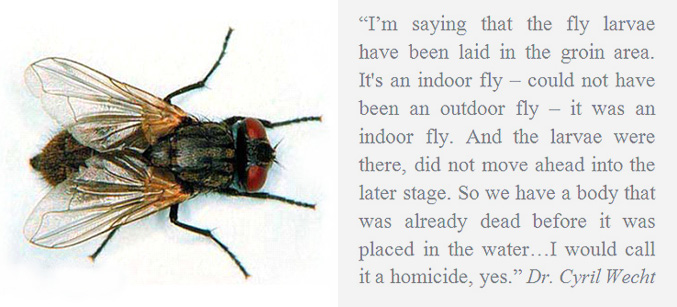In 1997, the world had yet to learn of the Smiley Face Killers when Patrick McNeill went mysteriously missing from uptown Manhattan in the dead of winter and his body was found months later in the East River beside a Brooklyn pier.
The 21-year-old Fordham University student’s epic missing-persons search and bizarre death rattled New York City and its homicide detectives two decades ago. Since then, however, hundreds of young men have similarly perished, in a drowning-man phenomena that continues to spread like a pandemic throughout North America and abroad.
Dubbed the ‘Smiley Face Serial Murders’ for iconic graffiti found at approximately four-dozen such crime scenes, the widening spree has gained international attention in recent years, and yet, as with the McNeill cold case, still remains unsolved.
No arrest was ever made or even a single Person Of Interest identified in the abduction and murder of Patrick McNeill back in February 1997. This is Victim Zero’s story:

There are conflicting accounts regarding the last time Patrick McNeill was ever seen alive. Some people said he was only a little bit drunk, and some said he was a lot. Some said he accidentally fell into the East River and drowned himself, and some said he was murdered.
What is agreed upon and substantiated by numerous witnesses and video surveillance is that the 21-year-old was last observed on the evening of February 16th 1997 at an uptown Manhattan bar called the Dapper Dog where he’d been drinking with some of his peers.
The Dapper Dog was a small, narrow college dive that local university students would frequent on the weekends when school was in session. Favored for its frat-like atmosphere, loud music and free-flowing booze, this popular pub also attracted its younger patrons with a “guest bartender” night, routinely appointing a popular student to bartend for the evening in hopes he might persuade his circle of friends to stop by for a drink and loosen their wallets.
By 1997 when McNeill and his classmates made the Dapper Dog their official watering hole, its owners had already racked up a considerable number of citations for their laissez faire serving policies. Among the most notable violations, selling alcohol to minors and continuing to serve customers who were visibly and seriously intoxicated. Noise violations were also included in the list of complaints against them, these filed by various neighborhood residents.
One of his college suitemates was the” master of ceremonies” on that February night Patrick McNeill visited The Dapper Dog for the last time in his life. Colleagues of McNeill say he was aware this particular young man didn’t care for him very much, but he felt he would be lending some support by showing up anyway. McNeill was a well-liked student otherwise and famous for going out of his way to help people; at the time, involved in at least a half dozen altruistic groups and related activities. A social organizer as well, he was also in charge of booking the entertainment acts for Fordham University, so showing up at a place where he may not have been wanted is probably best viewed within this context.
There were seven roommates sharing the Fordham campus suite that McNeill lived in, and more than one of them had openly professed to disliking the 21-year-old intensely, criticizing him to his face and behind his back for being a “womanizer” and complaining that he was always preening himself, that he cared to much for his personal appearance and was obsessed with his academic status.
Standing about 6-feet tall and weighing in at a well-toned 195 pounds, McNeill was in fact a good-looking, clean cut, athletic guy, and even those who counted themselves among his longstanding friends admitted, “Pat’s a real ladies man,” adding, “we’d tease him about his clothes, his cologne, how he had to be perfect.” As for McNeill’s pride in his collegiate accomplishments, one of his professors at Fordham confirmed the third-year undergrad was firmly “on the path for the accounting honor society. It’s a step in the direction of his dream,” she disclosed, “working for the FBI.”
His were lofty but reasonable aspirations for a young person to have, especially for an ambitious one who seemed so totally capable of achieving them. If he had not, somehow, been otherwise prevented.

In the early morning hours of the day McNeill went missing, after having just bid everyone goodnight at the Dapper Dog and announcing he was headed for the nearby subway station to return to the Bronx campus, Patrick McNeill was observed lingering out front of the bar for awhile. Allegedly he was waiting there for a female friend who was still inside using the ladies’ room but, when she failed to materialize in a timely fashion, he then proceeded down the sidewalk alone, slowly navigating two city blocks until eventually he turned the corner at 90th Street … and disappeared into thin air.
Before that, McNeill’s conduct as he had made his way south on Second Avenue from the 92nd Street pub was apparently so worrying that a number of passersby took notice of it, keenly watching as he staggered and sometimes fell down before getting up and stumbling onward again. These eyewitnesses also described a vehicle which appeared to have been shadowing McNeill’s movements from the minute he left the Dapper Dog. Suspicious of its driver’s intent, one of them, having first seen it double-parked at the bar where McNeill was originally standing, even had the wherewithal to obtain a partial license plate number. Other onlookers also reported their belief that the occupants were tailing the young man, saying the vehicle would come to a complete stop and then resume again each time McNeill would falter. When, in this highly disoriented condition, he finally turned left onto 90th Street, everyone who could see the vehicle at that juncture stated it also took a left.
And neither was ever seen again.
Though the New York Police Department and legions of citizen volunteers searched for Patrick McNeill in the days and weeks following his mysterious disappearance, handing out and hanging up more than 10,000 posters from New York City to Yonkers and in the process making it one of the most famous missing persons cases in the city’s history, the young man’s fate was not to be learned for months. In the interim, tensions would steadily rise between McNeill’s loved ones and the NYPD during the fruitless search, and it wasn’t long before the men in blue, who claimed they were being pressured by McNeill Senior’s strong republican ties in neighboring Westchester county, began leaking their own opinions about the case, about the victim’s character, and his possible whereabouts. Most of these quite negative.
“Patrick made some mistakes,” one detective cryptically alluded. “And it appears he needed some time and space to sort things out.”
“The kid screwed up,” a second NYPD cop emphatically stated. “He’s probably hiding out in Queens.”
“This kid is 21, he’s a partier and he doesn’t want to be in college,” yet another city detective informed reporters, confiding in them with palpable disdain that he also “knew” Patrick McNeill had impregnated a couple of young women. “He’s running around and involved in all this stuff so he doesn’t have to be in school,” the officer knowledgeably asserted.

One detective from NYPD’s missing persons bureau even pointed to the fact that McNeill’s ear and tongue were pierced and that the young man had a Celtic cross tattooed on his forearm as proof he was deliberately trying not to be found. “The public wonders why the cops are cynical,” the detective wearily opined. “It’s because of cases like this.”
The Dapper Dog, finding itself in the crossfire and the subject of extreme public and legal scrutiny over their role in serving McNeill on that night as well as to their dubious record in general, also joined in maligning the victim. “He’s shooting heroin on the Westside,” they derisively chimed. “But because he’s 21 now the cops can’t bring him in.”
McNeill’s discouraged family and friends, placed on the defensive in this way, vehemently disputed these unflattering assessments.
“It’s so out of character for my son,” McNeill’s father insisted. “I know it was foul play.”
“If he had problems he’d confide in us. And nothing was bothering him that I know of,” a friend who had known McNeill since childhood confidently assured the press.
Even one of his Fordham roommates stated for the record, “I’ve never seen Pat in a bad mood. He’s the last guy who’d run away from a problem.”
Things dragged on in this unseemly and unproductive manner well into March of 1997, where the futile search-and-rescue efforts were further exasperated by a series of false sighting in other boroughs of New York. For instance, a real estate agent from Queens reported that someone closely matching the missing man’s description stumbled into his office one day looking “disheveled and upset.” But this tip, and others like it, though investigated, only amounted to a wild goose chase for the already annoyed police officers of the Bronx precinct, who moaned that their time was being wasted on useless reports that led them nowhere in search of somebody clearly in hiding.
Finally, on April 7th 1997, Patrick McNeill’s badly decomposed body, clad only in his blue-jeans and socks, was spotted face up in the East River near a Brooklyn pier, some twelve miles away from his last known location.

Because of the *suddenly* questionable circumstances surrounding McNeill’s death and the condition of his corpse, the case was then tentatively upgraded as a potential abduction and murder pending further investigation by the police. As such, it was transferred from the missing persons department and reassigned to the NYPD’s much-decorated homicide detective, Kevin Gannon.
Examining the remains and recovery photos, Detective Gannon had suspected from the body’s lack of skin “slippage” that McNeill hadn’t been in the water for the entire two months he’d been missing. Maybe, in fact, he’d only been floating around in the river a few days before being discovered. Lividity wasn’t adding up, either; the telltale discolorations exhibiting on the front of the corpse clearly showing McNeil had to have died lying face down for all his blood to settle in those parts, whereas his body had been discovered and recovered lying face up.
Knowing from experience, too, that people who accidentally drown aren’t usually found floating on their backs, or with rope burns around their necks and other markings, the detective was very eager to formally name the yet unidentified owners and occupants of the vehicle seen following the victim as “persons of interest” in the case.
They were not just ogling spectators, Gannon felt certain, and Patrick McNeill had not simply lost his footing and fallen over the dock in some alcoholic stupor. Patrick McNeill hadn’t flung off half his clothes in the brutal month of February to take a night swim either, nor restrained himself somewhere with ropes or wires, torched his upper torso and head, dumped his rotting body miles upstream when nobody was around.
The McNeill’s had been unlucky to lose their son, but in Kevin Gannon they had at least found a friend in law enforcement, someone just as determined as they were to find justice.

Completely in line with the family’s way of thinking, the homicide detective also regarded the intoxicated angle with a great deal of skepticism. If a man McNeill’s size, a former high-school football captain, had appeared that wasted on only two or three cocktails, Gannon believed he must’ve been drugged to make it look that way, slipped a mickey, as they call it in the business. Probably a date-rape narcotic like Rohypnol or GBH, he speculated, colorless substances at that time and virtually tasteless so they couldn’t easily be detected when added to a drink. The effects of either Rohypnol or GBH -- impaired speech and muscle coordination, blackouts, amnesia -- could be quadrupled, even lethal, if mixed with enough alcohol, and both drugs were known to be fast-acting and almost untraceable, even in an autopsy.
So, naturally, Detective Gannon pressed for a “lawman search” to be conducted in order to determine the rest of the numbers on the suspicious vehicle’s license plate -- standard operating procedure for a suspected murder. To his surprise, however, the department declined his request, insisting the price tag of $1200 was much too costly an undertaking, and especially not warranted where a body exhibiting no major signs of physical trauma greatly diminished the chances of there having been foul play.
It was to be the first of a string of similar investigative setbacks the homicide detective would encounter in trying to solve the McNeill mystery, and when, on April 16th 1997, New York City’s chief medical examiner ruled the death an accidental drowning with the manner of death still unknown, Kevin Gannon realized he had a diabolical case on his hands he would never let go of.
Little did he know, within just a few years time, he’d have many more just like it.









